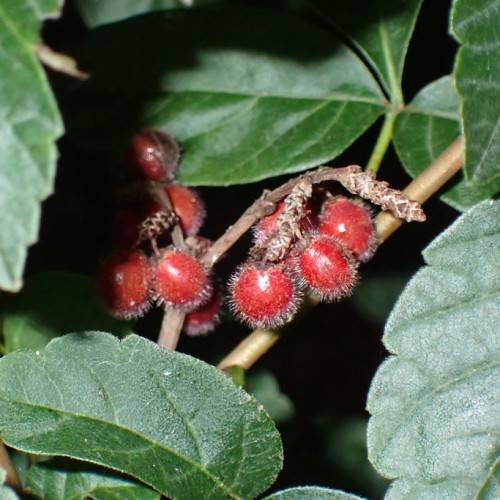
fragrant sumac
Rhus aromatica 'Gro-Low'
Cycle:
Perennial
Watering:
Minimum
Hardiness Zone:
3 - 9
Flowers:
Flowers
Sun:
Full sun,part shade
Fruits:
Fruits Ready In Fall
Edible:
Yes
Leaf:
Yes
Growth Rate:
Low
Maintenance:
Low
Drought Tolerant:
Yes
Salt Tolerant:
Yes
Care Level:
Low
watering
Fragrant sumac (Rhus aromatica 'Gro-Low') should be watered regularly, aiming for 1-2" of water per week. Water should only be applied when the top few inches of soil is dry, and it is ideal to water the soil around the tree slowly and deeply to promote root growth and discourage weed growth. Watering in the morning is ideal to allow the excess water to evaporate before nightfall, and during the hottest parts of summer, the plant may need additional watering to prevent wilting.
sunlight
Fragrant Sumac (Rhus aromatica 'Gro-Low') grows best in full sun, meaning it should receive about 6 to 8 hours of direct sunlight per day. In areas with intense heat or humidity, light shade may be beneficial during the hottest part of the day. For optimal growth and flowering, the plant should receive evenly dispersed light throughout the day. To ensure that all parts of the plant receive adequate light, position Fragrant Sumac in an area that has no nearby tall trees or structures that could block the light.
pruning
Fragrant Sumac (Rhus aromatica 'Gro-Low') is a low-maintenance evergreen shrub that grows in U.S. Department of Agriculture Plant Hardiness Zones 3 through 9. Pruning should be done once a year in early spring, before new growth begins. Prune to maintain a desired size and shape of the sumac to keep it looking neat and healthy. Trim the shrub back to maintain the natural shape and reduce its size, if necessary. Prune off any dead, damaged, or diseased branches to reduce the amount of pests and disease that can affect the shrub. Remove any crossed branches, any branches that are too close together, and any branches that are growing too close to or rubbing against other plants. If you notice any vertical shoots, they can be trimmed off to promote more lateral branching.
